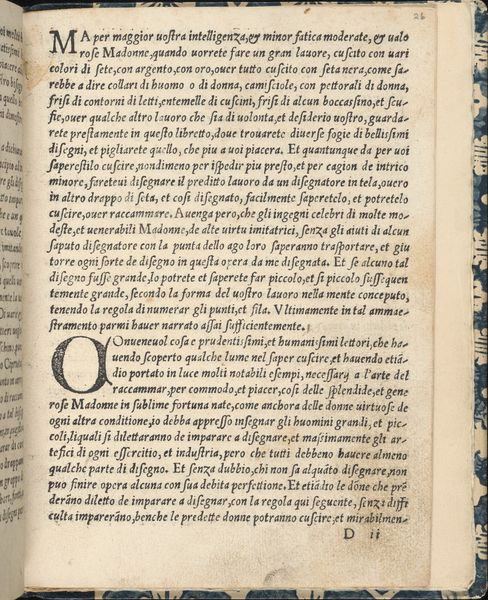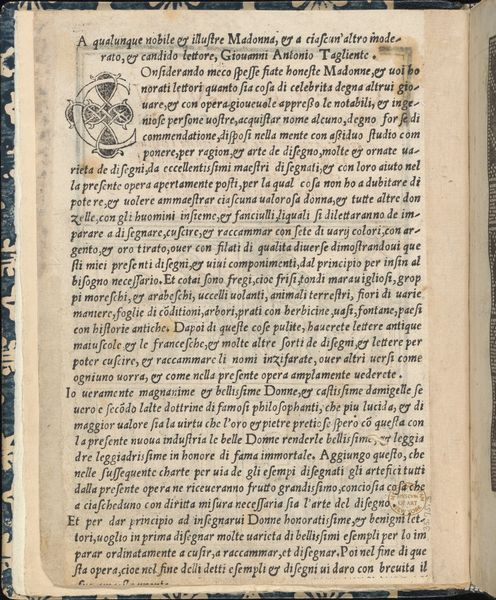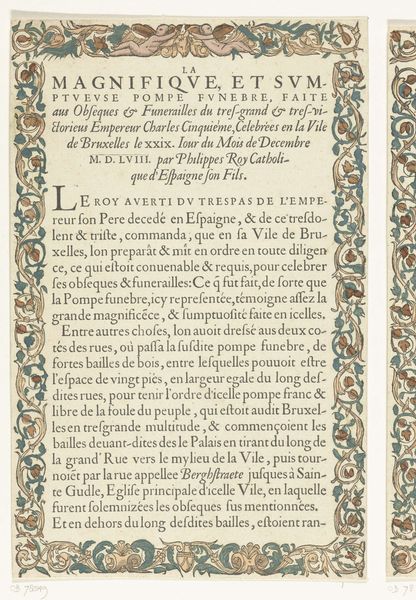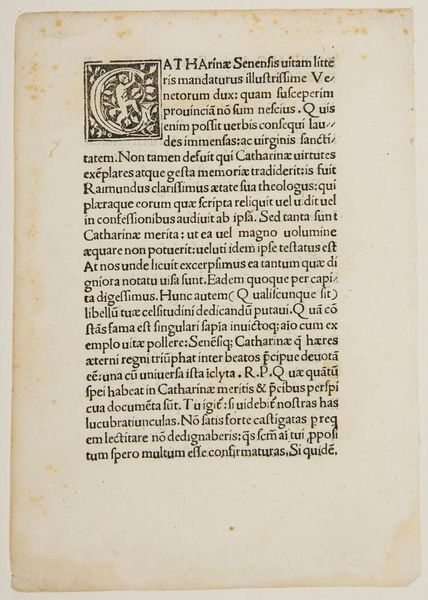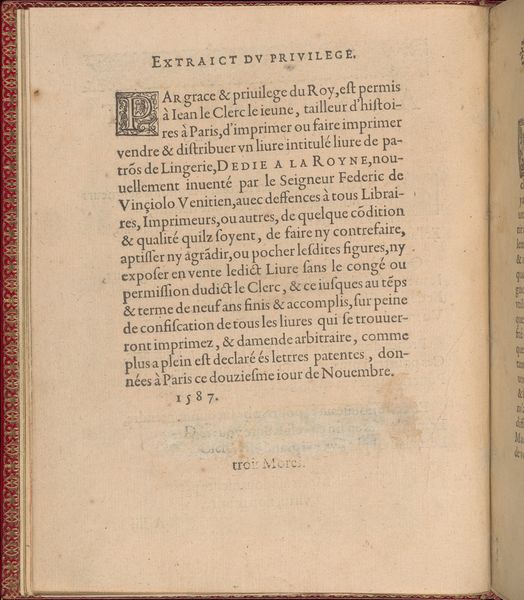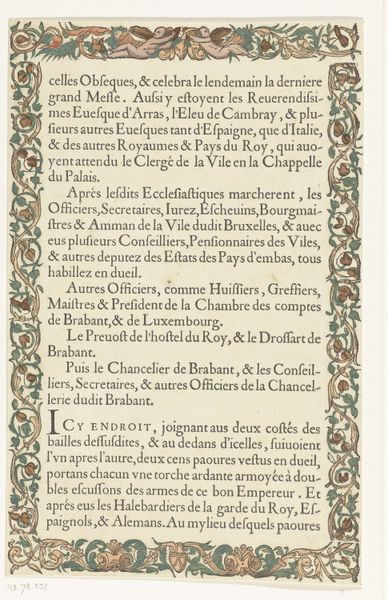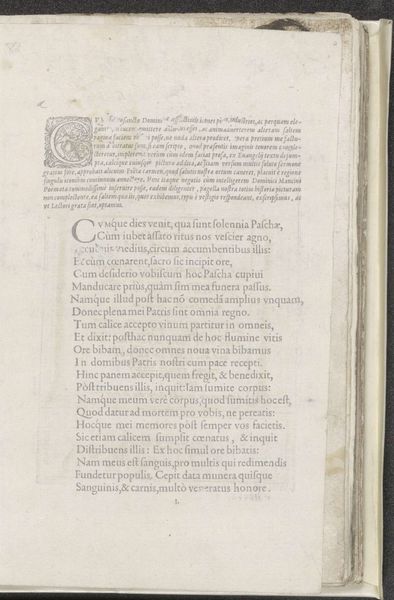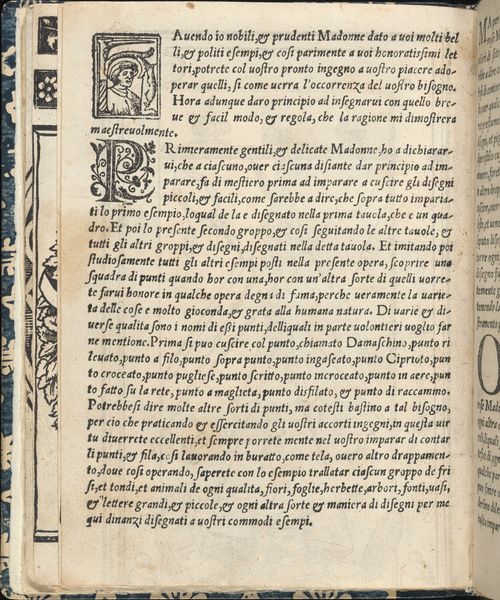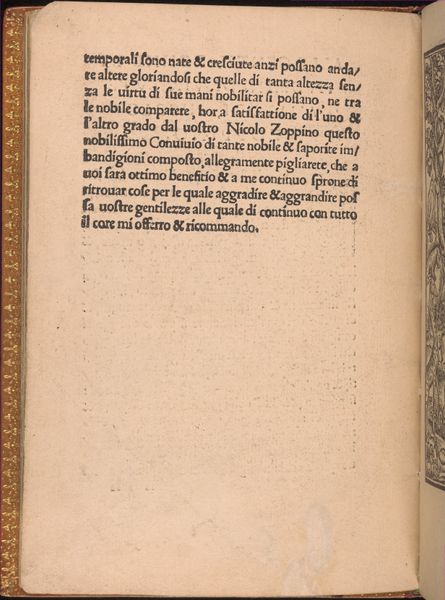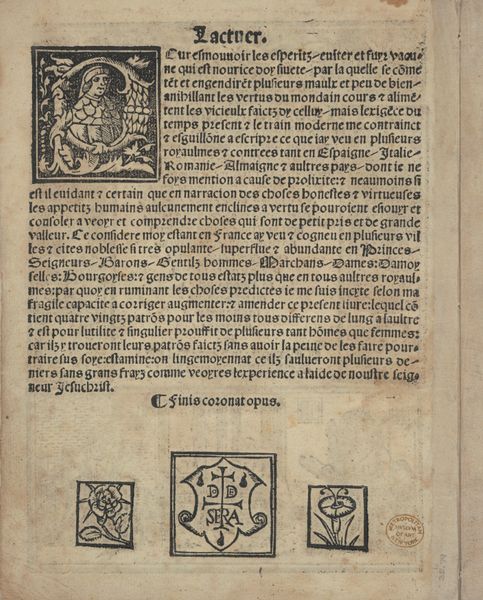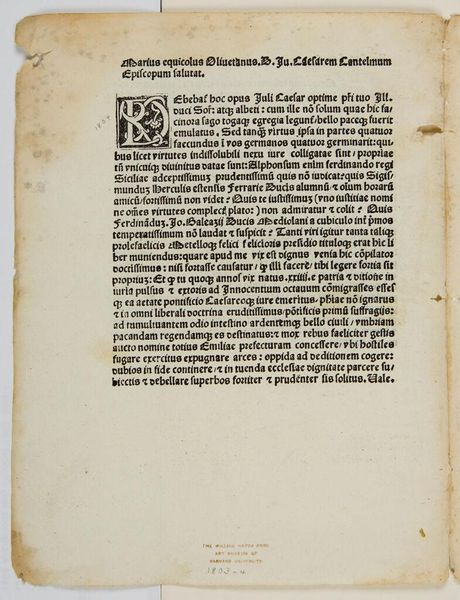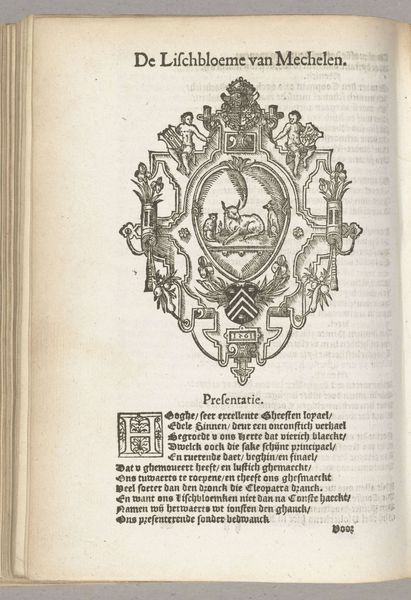
Tekstblad bij de Begrafenisoptocht van keizer Karel V, 1558 1559
0:00
0:00
graphic-art, print, paper, typography, engraving
#
graphic-art
# print
#
paper
#
text
#
11_renaissance
#
typography
#
northern-renaissance
#
decorative-art
#
engraving
Dimensions: height 246 mm, width 158 mm
Copyright: Rijks Museum: Open Domain
Curator: This text sheet, "Tekstblad bij de Begrafenisoptocht van keizer Karel V, 1558," created by Christoffel Plantijn in 1559, is currently housed in the Rijksmuseum. What are your first thoughts on encountering this piece? Editor: Well, the decorative border is lovely, but overall it seems very formal, very official. It’s a printed text on paper, so fairly simple materials, but it clearly commemorates a significant event. What strikes you most about it? Curator: For me, it’s the materiality of this object that speaks volumes. Consider the paper itself: its production involved labor, trade networks, and a whole system of material exchange. And Plantijn's typography—each letterform, meticulously crafted and arranged—speaks to a specific mode of production, a skill, and a profession. This wasn't mass media in our sense; each sheet represented significant time and expertise. Editor: So you're saying the materials themselves tell a story about 16th-century life? The paper, ink, and the printing press. Curator: Precisely! The very act of producing and distributing this text reveals a complex web of social and economic relations. The text itself describes the opulence of Charles V's funeral, but the printed sheet brings us down to earth, forcing us to confront the realities of its own creation. Look at the deliberate placement of the text within the page, framed with decoration; the act of designing for this media in this way is inherently performative. How the artist uses a material directly creates context. Editor: I hadn’t thought about it that way before. So instead of focusing on just the event being described, you’re drawing attention to the work and resources involved in creating the artifact itself. Curator: Absolutely. By focusing on the materials and processes, we can move beyond the traditional boundaries of high art and explore the labor and consumption embedded within this historical artifact. Editor: That gives me a whole new way to appreciate prints from this era. I am glad we dove into the materiality to deepen our understanding.
Comments
No comments
Be the first to comment and join the conversation on the ultimate creative platform.
